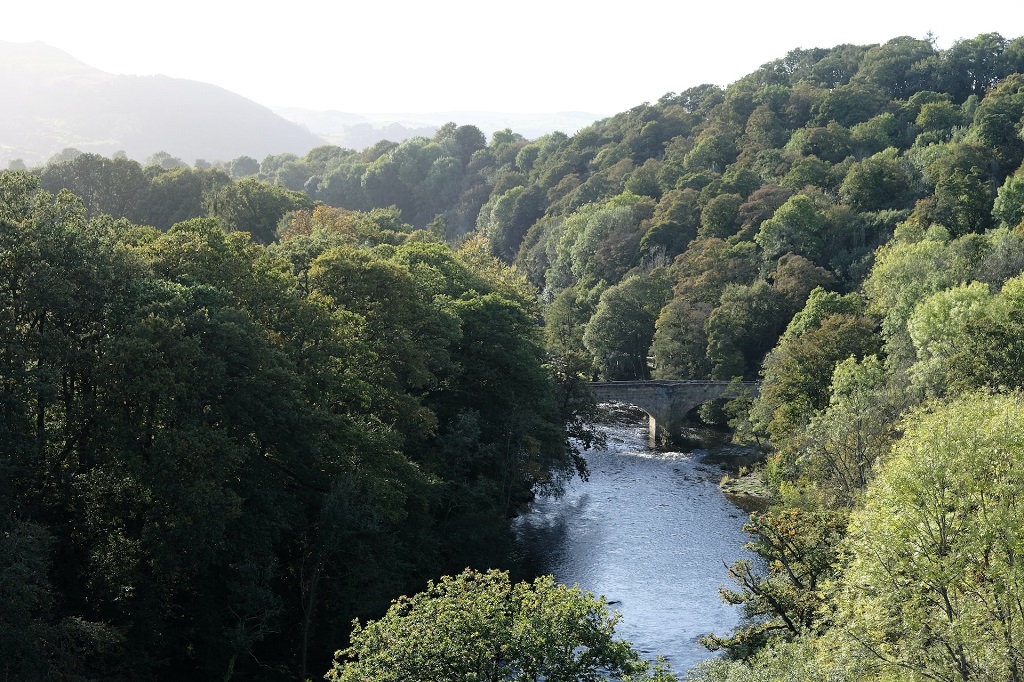The Subplot
The Subplot | Planning pollution purgatory, sheds, and rankings
Welcome to The Subplot, your regular slice of commentary on the business and property market from across the North of England and North Wales.
Good Thursday morning,
THIS WEEK
- David Thame is away. Julia Hatmaker writes about how river pollution is putting development plans into purgatory in North Wales
- Elevator pitch: your weekly rundown of who and what is going up, and who is heading the other way
UP THE CREEK
Planning purgatory
Thousands of potential developments in North Wales are in planning limbo because of continued issues of pollution in the River Dee.
Earlier this month, Wrexham County Council Leader Cllr Mark Pritchard told local news outlets that there were 3,500 planning applications waiting to be taken forward in the area – held in a logjam due to problematic nutrients in the water of the special conservation area.
In fact, more than 60% of river catchment areas in Wales fail current regulations for nutrient neutrality.
River pollution is not a North Wales problem alone. In the North East, 29% of allocated housing delivery areas sit within the troubled Teesmouth and Cleveland catchment area. This equates to more than 21,000 proposed homes, with a total construction value of nearly £3bn, according to a March report from the Home Builders Federation.
Nationwide, HBF estimates that nutrient neutrality issues are impacting the delivery of around 150,000 homes.
So, what’s the hold up? And is there an end in sight?
There’s something in the water
Phosphorus is the chief culprit in North Wales and the North East.
Phosphorus plays an important role in marine ecosystems and can help algae and aquatic plants grow. That’s great. But in your classic case of ‘too much of a good thing’, if phosphorus levels in water get too high then eutrophication occurs – eutrophication being a fancy word for the increase in the concentration of nutrients in a body of water. The result is too much algae and too many plants growing, consuming all the oxygen in the water, and leaving fish and other lifeforms to suffocate. The entire ecosystem is damaged.
Phosphorus tends to come from human and animal waste, arising from residential developments and agricultural ones. Thus, the freeze on the delivery of homes.
Wet blanket
Elsewhere in the UK, nitrogen is the guilty party. But unfortunately for the North – it’s phosphorus we must contend with, which is harder to treat.
“It is far easier to mitigate nitrogen than phosphorus levels onsite,” says Wendy Furgusson, associate within consulting engineering group Ramboll’s environment and health team.
“Nitrogen levels can be decreased through a change of land use, such as transforming farmland into woodland. Mitigation options for phosphorus are currently more restrictive, as a change of land use will not provide the level of reduction required.”
Controlling phosphorus, on the other hand, means creating new wetland habitats (which requires land), improving wastewater treatment facilities (which requires money), and time (which requires patience).
Murky water
The issue is more than just with the phosphorus itself. The planning hold-up is partly because local authorities lack the expertise or technical training required to calculate likely phosphorus levels in a new development, then extrapolate the impact on the catchment area’s conservation goals, and finally implement acceptable mitigation measures.
While waiting for clarity, planning officers are sitting on applications or refusing them for lack of information regarding compliance with phosphorus level policy.
On Wrexham County Council’s website, the local authority tells developers who are looking to build around the catchment area that they “may wish to wait” before submitting an application. Wrexham County Council did not respond to Subplot’s requests for interviews or comments, but the website message seems like a rather strong hint for developers to hold off – for now.
Drowning
In the meantime, developers are left without a lifeline.
Castle Green Homes has multiple projects in Flintshire and Wrexham that are impacted. Together these schemes would total around 650 homes and represent a combined GDV of more than £120m, if they could be built.
“This is money that would be supporting the local economy and is just a small part of the overall economic impact on the local area,” says Stuart Andrew, design and planning director at Castle Green.
“The delays created by this issue have caused Castle Green significant financial harm and, for smaller local businesses that are reliant on schemes proceeding, the effect has been crippling and poses a genuine threat to their future.”
Coming up for air
Change is coming though, and both Whitehall and the Senedd have recognised that something needs to be done. Both are attempting to score victories on two fronts: reducing backlogs by permitting development while upholding water standards.
Whitehall played its card last year with an amendment to the Levelling Up Bill, legally requiring water companies to upgrade wastewater treatment works by 2030. That’s great… for 2030. But we’ll take victories when we get them.
Another step in the right direction comes from the Department for Environment, Food, & Rural Affairs, which started a consultation this year on how to best implement the requirement for new developments to have sustainable drainage systems.
“SuDS have a really important role to play,” says Stephen O’Malley, chief executive of Civic Engineers. He calls SuDS “vital” when it comes to increasing the resilience of wider drainage systems, which can help prevent the sewer runoff that leads to phosphorus increases in the first place.
“Using nature-based solutions is the optimal way to address the problem,” he says.
Watertight plans?
The Senedd held its second River Pollution Summit last month and came up with a strategy for tackling the issue. Targets were set for crafting nutrient management plans and holding refresher training courses on nutrient management for local authorities.
“Delivering the actions identified at the summit will allow housing development in the affected SAC river catchments to restart,” a Welsh government spokesperson tells Subplot.
The most promising result, in Subplot’s opinion, is the creation of the All-Wales Nutrient Calculator – a single tool to help all local authorities in Wales measure a scheme against their catchment area’s nutrient data. This ought to help move the planning process along and equip local authorities with the knowledge they need.
A contractor is set to be appointed to create this calculator in June.
Laura Courtney, head of policy and external affairs at Community Housing Cymru, the voice of Welsh housing associations, describes the summit’s actions as “welcome building blocks”, but adds that more needs to be done.
“A long-term strategy which sets ambitious goals for environmental management as a core part of the housing development strategy for Wales is also clearly needed,” she says.
“This should include investment to support housing associations and local authorities to deliver innovative approaches to excellent environmental management in the development of new affordable homes.”
Not a total drain
Not everywhere in North Wales has had it as hard as Wrexham. Cyngor Gwynedd’s local planning authority area has three river catchments impacted by phosphates – however, these are lowly populated. The council describes nutrient neutrality concerns as not having significant impact.
In fact, it points out that only three applications have been placed in limbo because of phosphate concerns – among them an affordable housing project for 16 homes. The Gywnedd local plan also has another site that could have phosphorus issues, allocated for 10 homes, but no application has been submitted yet.
While it’s good news for Gwynedd, Denbighshire County Council is facing a tougher battle. In its annual review of the local development plan, the county wrote that 42% of its land falls within the catchment area for the River Dee SAC.
Last year, 43 planning applications were being held in abeyance because of nutrient neutrality issues. These would deliver up to 137 homes, including 12 that were designated affordable, as well as tourism and commercial spaces.
“This will consequently have a negative impact on the annual average rate of housing completions in future years,” the report warned.
In the meantime, the housing crisis continues.
Learn more about efforts to address biodiversity, sustainability, and net zero concerns at Place North West’s Sustainability in Practice event on 6 July.
 ELEVATOR PITCH
ELEVATOR PITCH
Going up, or going down? This week’s movers
The down button must be broken because this lift is only going up, up, up!
 North West sheds
North West sheds
It’s set to be a crackin’ year for the North West warehouse scene if the latest figures from B8 Real Estate’s regional market report are anything to go by. The industrial agent states that the value of industrial property investment deals increased by 150% in the first quarter of 2023 compared to the same period last year, rising from around £125m to £313m.
Much of that money comes from three deals: a £43m Bolton acquisition by Amazon, a £32m Warrington purchase by Leftfield, a £71.5m Central Trading Estate buy by Blackstone. Add to that a fourth deal: Copley Point Capital getting two warehouses in Warrington and Skelmersdale as part of a £125m transaction.
Learn more about the warehouse scene in the North West at Place’s Industrial + Logistics event on 11 May.
 Manchester’s future
Manchester’s future
Manchester is officially the 15th most expensive city in the world for construction, or so says Arcadis’s 2023 International Construction Costs report. Manchester was the third most expensive in the UK, coming behind London and Bristol.
This sounds like bad news, but Arcadis is not worried, adding that part of the reason for the city being so expensive is a UK-wide push for greener design and improved building standards.
“Manchester’s construction market has benefitted from a very diverse pipeline, with strong demand from the office, residential and university sectors,” says Simon Rawlinson, head of research and strategic insight at Arcadis.
“There are some signs of a pause for breath, but the long-term development pipeline is exceptionally strong, driven by demand from the life-sciences and build-to-rent sectors and the presence of a strong local development sector.”
Get in touch with Julia Hatmaker: julia@placenorthwest.co.uk




